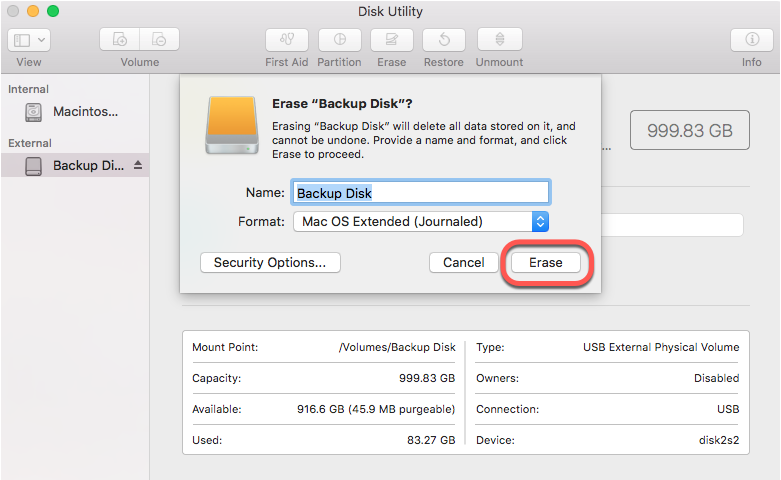
Use the following Terminal command to change the user and group of the downloaded archive.
#File system check exit code is 8 mojave archive#
The files and folders expanded from the archive should also be assigned to the "root" user and the "wheel" group. In a dedicated server, the downloaded archive should be assigned to the "root" user and the "wheel" group. However, files and folders expanded from a downloaded archive may be assigned to different users and/or groups. Read, write, and execute permissions are assigned to each of these scopes.įiles downloaded from the internet are usually assigned to the current user and group. These scopes are known as user, group, and others. Permissions on UNIX-like systems are managed in three distinct scopes or classes. UNIX-like and otherwise POSIX-compliant systems, including Linux-based systems and all macOS versions, have a simple system for managing individual file permissions. You will be prompted for an administrator password:Ĭonfirm removal of extended attributes with "ls quarantined files persist or you forget this step before expanding the archive, remove the extended attributes from the expanded folder with the following command, also requiring an administrator password:


After downloading the BIND9 archive from the ISC (Internet Systems Consortium) web site, check the extended attributes with the following command:

The Terminal app is the most effective means of fixing quarantined files and UNIX permissions (discussed below in its own section). macOS will not permit access to sensitive services by or with quarantined files, and each migration process entails a degree of complexity that would not tolerate a quarantined file. All other downloads from the internet are automatically quarantined with a file system extended attribute named "". macOS MALWARE PROTECTIONĪpp installation on Apple devices is strictly controlled and limited to the App Store and identified developers. " option in the Application Menu to increase the window size (Window tab in the Profiles tab) to at least 100 columns and 50 rows. The default Terminal display is too small to be effective. Most migration steps require using a UNIX shell (command line) interface such as the macOS Terminal app. See SERVER PREPARATION for more information. Root users do not need the "sudo" command prefix in the macOS Terminal app. I recommend activating the root user account and logging in as the root user to immediately establish administrator credentials which do not expire. Since solving all of these problems is much easier on a dedicated server, this post will assume a dedicated server.

Rather then echoing the contents of the Service Migration Guide, I will focus on the caveats, each of which is an obstacle to success. The macOS Server Service Migration Guide v1.2 details the processes for configuring, building, testing, installing, and launching BIND9, with some big caveats. This post will address the open source solution using BIND9. In order to recover the local domain name table after upgrading macOS Server, a DNS service (open source or proprietary) must be installed and launched. DNS services are not bundled or launched with macOS Mojave or macOS Server v5.7+. Apache v2.4.34 is bundled and launched with macOS Mojave. No such luck.Īlthough macOS Server discontinued web site support, many macOS Mojave and macOS Server services require web services, as do many apps. After all, serving web sites seems to be a much more complex task compared to serving and referring domain names. I discovered a simple solution for recovering my websites ( macOS Server v5.8: Where Are My Web Sites? or /thread/250537819), and I expected the DNS solution to be even simpler. 5.7, Apple has discontinued macOS Server support for many services that have macOS or open source alternatives. After upgrading to macOS Mojave and macOS Server 5.8, DNS and web services were no longer available.


 0 kommentar(er)
0 kommentar(er)
